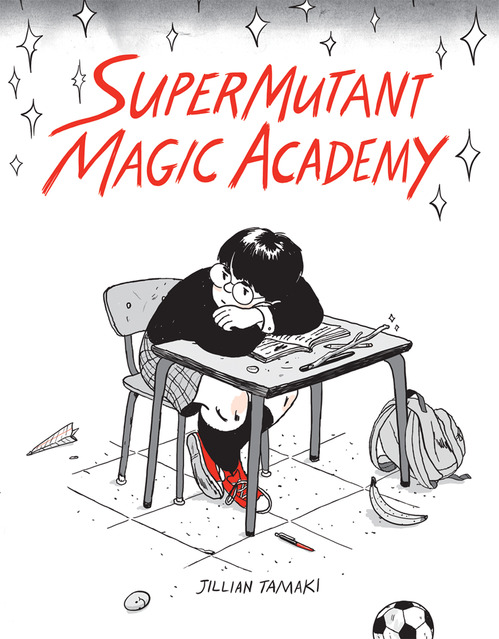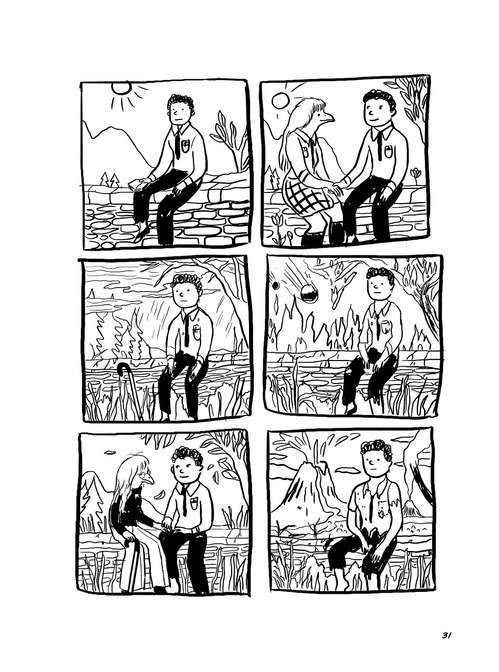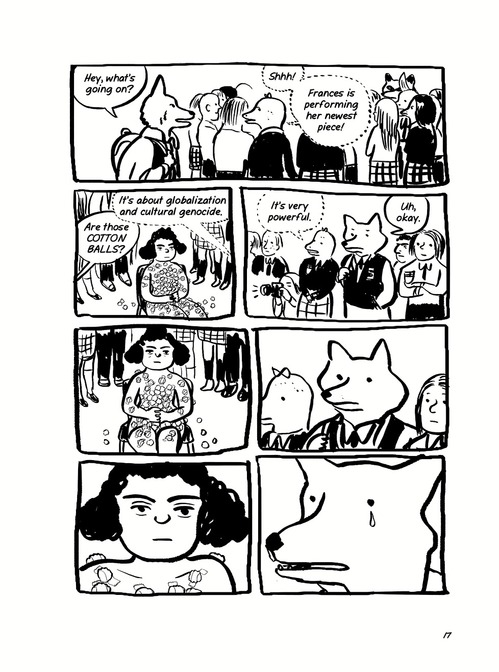Calvin and Hobbes with Powers: Jillian Tamaki On SuperMutant Magic Academy
Portrait photo by Reynard LiIt’s easy enough to think of intermittently published webcomics as completely ephemeral, the kind of transient media designed to get a cheap laugh, resurface on various Tumblr accounts a million times and then be forgotten forever. The other end of the webcomic spectrum offers complex, long-form narratives planned out years in advance. But Jillian Tamaki’s SuperMutant Magic Academy, newly published in a paperback compilation by Drawn & Quarterly, is something different. Apart from an extended story that takes up the last chunk of the book, Academy revolves around single strips that present isolated snippets of story. Tamaki dips in and out of the lives of superpowered teenagers who attend a boarding school designed to foster their talents. But, in the process, the strips build a beautiful and complex world that’s equal parts melancholy (or ennui, as Tamaki puts it) and comedy.
Though the superpowers and genre staples provide many whimsical and fantastic moments, they’re rarely the point. Instead, these vignettes focus on the three-dimensional adolescents who lust after one another, pursue creative goals, play unorthodox D&D, annoy their teachers and demonstrate their disarming insecurities. SuperMutant Magic Academy is far more Freaks and Geeks than X-Men.
Along with her cousin Mariko, Tamaki also co-created the nostalgic graphic novel This One Summer, which garnered her a Printz Award and Caldecott Honor, as well as ink ribbons of acclaim. Conversely, SMMA is wry and raw at the same time, unafraid of a dirty joke and impeccable in its timing. Tamaki answered some emails about SuperMutant Magic Academy. ![]()
Paste: What was your process for creating SuperMutant Magic Academy? It seems like some strips were painstakingly worked over and others are just quick sketches.
Tamaki: It was originally a webcomic on Tumblr. So a “new installment” was posted whenever I felt like making one, or was inspired to do so. So yes, some are rough and some a little more polished. They are all done in Photoshop on a Cintiq (which is like a monitor that is also a tablet you can draw on), except for if I was on vacation or if I only had a pen and paper on hand.
Paste: Being that it was a webcomic, you could have done almost anything, format-wise. Did you hold yourself to a fairly standard-size page (and panel format) on purpose? Is it determined by the Cintiq screen size/shape?
Tamaki: Well, actually, I would say it’s pretty limited. Specifically, the size of a Tumblr dashboard. I wanted to make something you could read comfortably in that format.
Paste: Okay, so how about color? Some pages have it. Others don’t. Was this option just determined by what the story needed? Was SMMA a way to experiment within its limited format?
Tamaki: Exactly, yes. I tried to do them without color, generally. The color is only there if absolutely necessary, either for story or legibility.
Paste: One of the things I find interesting is how the strips come together to create a fairly complete picture of the school, even though I assume the strip was created episodically. Did you have that picture in your mind to start out?
Tamaki: I started out only with an intentionally thin, silly conceit and hoped to hang bigger things off of it. The book grows from a very rough seed of an idea to a more fleshed-out world (albeit one that is still pretty narrowly focused). I think some people will find that interesting while others might prefer a shiny, polished graphic novel. But that’s not what this is.
Paste: How is working on SMMA different from your other work?
-

-

-

-

-

-

-

-

-

-

-

-

-

-

-

-

-

-

-

-

-

-

-

-

-

-

-

-

-

-

-

-

-

-

-

-

-

-

-

-














































